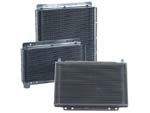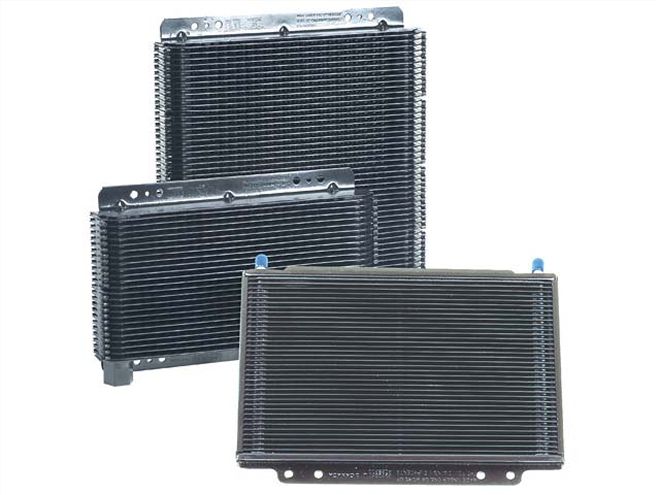
 Companies like B&M, TCI, and Perma-Cool offer trans coolers for a whole slew of applications based on intended use and space limitations. The most common designs are the "stacked plate" variety in which the fluid flows through multiple passages within the stacked cooling plates.
Companies like B&M, TCI, and Perma-Cool offer trans coolers for a whole slew of applications based on intended use and space limitations. The most common designs are the "stacked plate" variety in which the fluid flows through multiple passages within the stacked cooling plates.
You've just installed that high-stall converter in your street/strip machine. Feels real good when you mash the pedal and leave your rubber calling card, but when you cruise around town, the converter does an awful lot of slipping at light throttle. All that slipping generates heat--potentially damaging heat--but this is a fact of life with a high-stall torque converter. Heat is the enemy, but you can combat it and extend the life of your trans by installing a transmission cooler.
Transmission heat is generated by a number of factors, including vehicle weight and load, horsepower, stop-and-go traffic, and a "loose" converter rating.
According to the transmission experts at B&M, the ideal temperature of an automatic transmission is 170 degrees F. At a constant 170 degrees, transmission fluid can live up to 100,000 miles, but for every 10 degrees of sustained temperature above this mark, fluid life drops by up to 50 percent. When fluid overheats, it oxidizes and breaks down rendering it ineffective. Perma-Cool, another leading cooler maker, notes that 90 percent of all transmission failures are caused by overheating. The solution is easy and relatively cheap.
Stock automatic-equipped vehicles normally route trans fluid to a heat exchanger in the radiator for cooling, but the trans fluid has to compete with the engine coolant within the radiator's capacity. The ideal solution is a dedicated external transmission oil cooler, which relies on outside air for heat transfer rather than the overworked radiator. If you're on a really tight budget, an OEM oil cooler can be used for trans fluid cooling duty. Oil coolers were used on many severe-duty applications, such as tow vehicles and police cars.
Aftermarket trans coolers come in a variety of shapes and sizes to accommodate your particular application and are generally rated by gross vehicle weight (GVW), typically ranging from a minimum of 12,000 GVW (for small and compact cars) all the way up to 30,000-plus GVW for very heavy-duty applications like large motorhomes and tow rigs. But what about your hot rod? The hard-and-fast rule is "the bigger the better," and the only limit is space. You should always strive for unrestricted airflow, and if you're mixing hard lines with rubber, flares should be used to prevent the rubber line from popping off. It is also wise to route lines away from heat (exhaust system heat in particular) and moving parts. Cooler designs vary from company to company, but the basic premise is the same: Keep the fluid cool, extend the life of your transmission. Durability and consistency will greatly improve with the addition of a transmission fluid cooler. It's simple and absolutely necessary for the health of your hot rod. Installation is easy and the price is a bargain compared to the cost of a transmission rebuild.